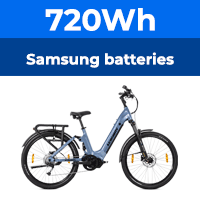Yes, this is a problem, and not just when the battery is full. Most ebikes use lithium batteries which don't like a high charge rate. The power provided by regenerative braking tends to come in high power bursts, which doesn't suit the charging requirements of the type of lithium battery used in most ebikes.
When an electric motor is used as a generator the braking effect will be proportional to the power taken, or load. The controller can regulate the power going to the battery but this will also affect the braking effect. When the battery is full the controller should stop any power being taken, reducing the braking effect to nil. There will be no load on the motor/generator, so it will not be producing any power, and there will be no heat to lose.
One could design a system such that the braking effect was greater, and consistent, but that would require an external load, i.e. resistor, with a suitable heatsink and cooling. This is how electric train brakes work. Although some of them are capable of feeding their regenerative braking power back into the system they all use banks of resistors under the train as well.
Most types of motor used in ebikes have freewheels and are not suitable for regenerative braking anyway. For those motors that are suitable the amount of energy that can be recovered is not really worth the extra complication. Although electric brakes work well on high mass trains braking a low mass bicycle is hardly a problem, and again not really worth the extra complication.
It is a good marketing gimmick though!


